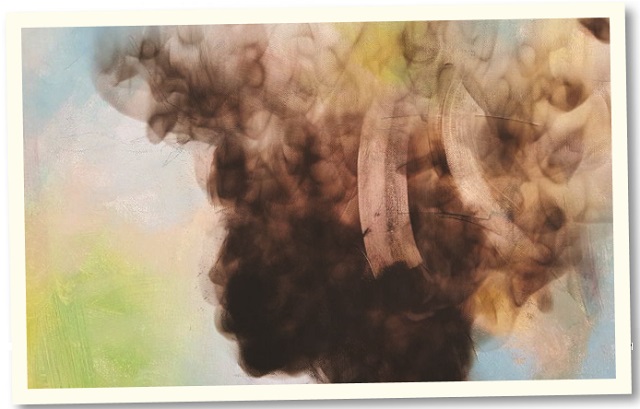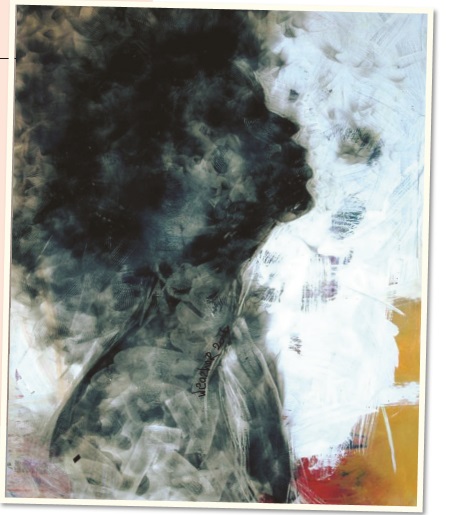
Common tadooba candle inspirations form avant garde mixed media exhibition
Kampala, Uganda | DOMINIC MUWANGUZI | Experimental artist Weazher Mayanja has evolved another new technique. The Kyambogo University don is this time using soot from tadooba candle flames on canvas to create captivating art forms.
In an ongoing exhibition at Nommo Gallery in Nakasero, Kampala, the artist uses soot, with its dark black identity against a white background of canvas. The effect is an injection of his artworks with a natural feel similar to pencil drawings which Mayanja isalready known for.
He says the unique technique is challenging and required a lot of research for him to perfect. At one point, he says, he had to travel to his grandfather’s house in the countryside where the local tadooba candle is still widely used. He says he needed to study soot a closer range. Even then, it took several years for the artist to perfect his style of working with soot. His background in drawing was also a factor in the success of this technique.
The works are so different from his previous exhibit where he fused his musical background- figuratively represented by traditional instruments like the xylophone (Ngalabi) and thumb piano (Ddigidi)-with abstract human figures on canvas. This time the artist concentrates on the female subject.
He “paints” young women in different roles like farming or indulging themselves in social activities like hanging out at the saloon which is popular with many women. His “paintings” attempt to capture what he considers to be major feminine traits; like calmness, using symbols. In this case, it is butterflies.
In the current exhibition, he shares the gallery pace with another artist, Asumpter Nakamya, who is also using experimental materials. In her case, it is fabric cut-offs which she fuses texture, colour, and patterns on the same surface using experimental techniques.
The bright coloured fabrics sculpted from waste fabrics are vibrant and exude energy. Nakamya, who has just finished her Masters in Art degree, is a fresh name in art but her blend of figurative and abstract styles with messages that interrogate the human condition and behavior are captivating.
For instance, she her vibrant greens and blue intended to allude to humility and calm, while the yellows and red against a monochromic background of black and grey represent emotional uncertainty, and the purples and pink suggest the notion of possession or possessiveness. Nakamya says “women by nature are possessive”.
“They want to hold onto something and they’re best described by pink and purple,” she says with a shy smile.
The artist integrates her displays with small buttons of different shades as a figurative representation of femininity and the idea of fabric construction. Without buttons, she says, a dress is never finished.
The femininity aspect celebrated throughout her artwork is obviously mirrored in her persona as a young beautiful female with an urge to create and reconstruct life. In her art, you observe the ability to merge ideas to produce tangible and real things. Her art also has an element of simplicity, playfulness and neatness that makes it catchy.
It seems inevitable that young contemporary artists are marrying fashion design elements with art. It is all part of the hustle to break through the now highly competitive local art industry. Some of their approaches have worked for other artists like Hellen Nabukenya with her colourful elaborate fabric installations designed from cut off materials and Teddy Nabiseke’s fabric-designs sewed from similar materials.
The choice of woman or femininity as a subject matter for this exhibit bonds the two artists. Away from the similarity in subject matter, the exhibit titled `Open Expression’ is a platform for each of the two artists to explore themes of personal identity, human condition and behaviour, and experiment with new media and renew the debate on the impact of woman in society.
The exhibition opened on June 23 at Nommo Gallery in Nakasero, Kampala.

****
 The Independent Uganda: You get the Truth we Pay the Price
The Independent Uganda: You get the Truth we Pay the Price


